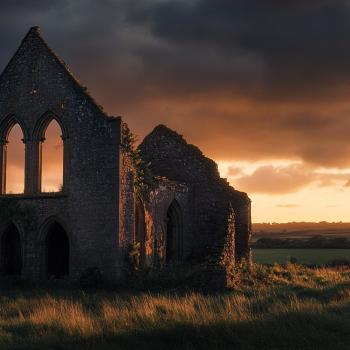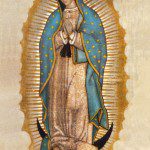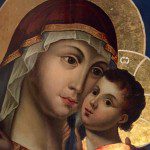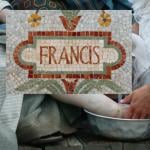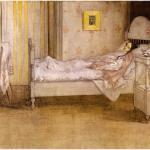![tumblr_lgkrm87YPH1qetwk0o1_500[1]](https://wp-media.patheos.com/blogs/sites/628/2011/04/tumblr_lgkrm87YPH1qetwk0o1_5001-231x300.jpg)
Located in the heart of the Pilsen neighborhood (which is home to many Latinos), the museum celebrates both Mexican and Mexican-American art. While not large, the museum is a visual delight, full of works that vibrate with life and beauty (no museum-white walls here, for instead the works are displayed on brilliantly colored backgrounds).
I knew I was going to like this museum when I entered its first exhibit and saw a large painting of the Virgin of Guadalupe. “This is the most important and powerful symbol in Mexican culture,” explained our guide. “Even if someone is an atheist, they value the Virgin of Guadalupe because she represents the triumph of hope over fear and oppression.”
This representation of the Virgin Mary derives from 1531, when the Mexican peasant Juan Diego received a Marian visitation in what is now Mexico City. The iconic image of a dark-skinned Virgin Mary represents the contact between the Spanish and the native peoples of Mexico, but she also serves as a bridge between the Aztec and Christian worlds. For many indigenous Mexicans of the time, the Virgin Mary was similar to Tonantzin or Coatlicue, who as Aztec goddesses were also the mothers of gods.
Many of the works displayed in the museum evoke the Virgin of Guadalupe (for example, one amusing painting blends her image with the Mona Lisa). But my favorite by far was a trio of paintings done by Yolanda M. Lopez that show the Virgin of Guadalupe as a maiden, mother, and crone. The artist used herself, her mother, and her grandmother as inspiration.
![lopezyolanda6[1]](https://wp-media.patheos.com/blogs/sites/628/2011/04/lopezyolanda61-233x300.jpg)
It was the crone painting that moved me the most. It pictures the Virgin of Guadalupe dressed in some sort of uniform, her face worn but kindly, exuding wisdom and weary grace. She is holding a skinned snake, an evocation, perhaps, of both the Christian symbolism of the snake in the Garden of Eden but also of Coatlalopeuh, a pre-Christian, Meso-American fertility goddess associated with snakes.
![7[1]](https://wp-media.patheos.com/blogs/sites/628/2011/04/71-758x1024.jpg)
And I like to think of the Virgin of Guadalupe watching over the National Museum of Mexican Art and the colorful works within it, pleased that her children have created a holy place for her, there amid the confines of an art museum.


